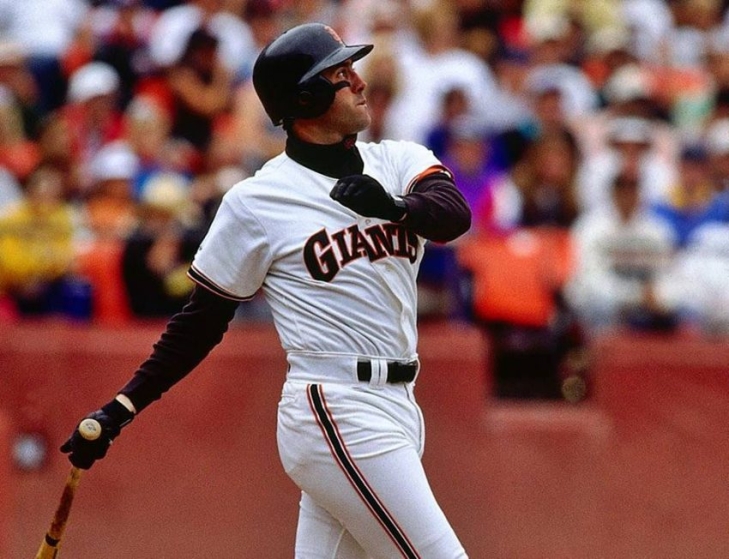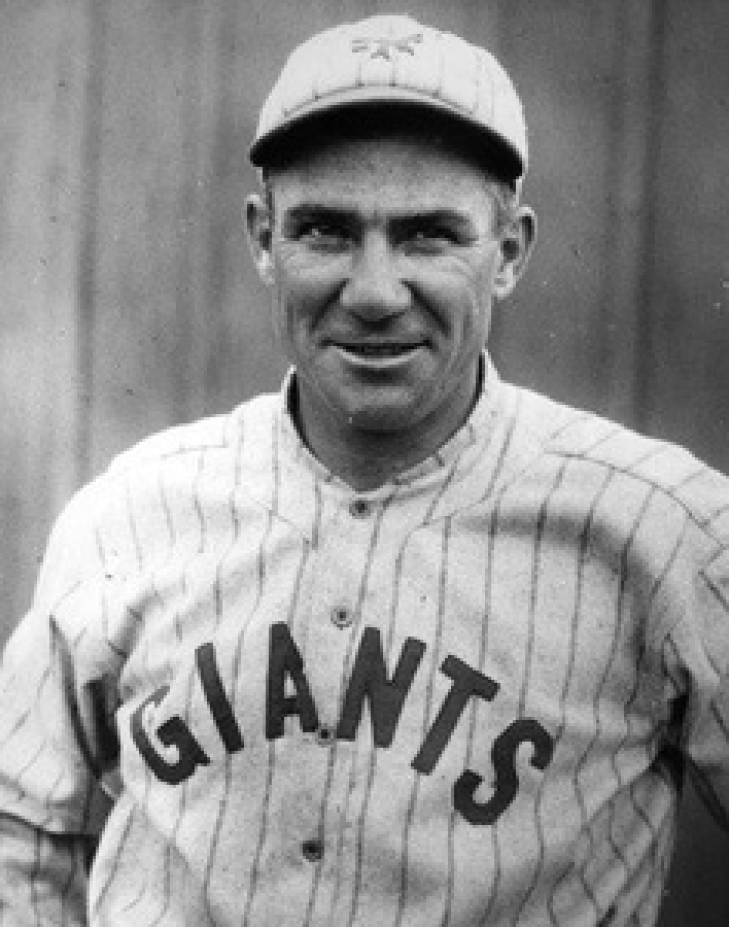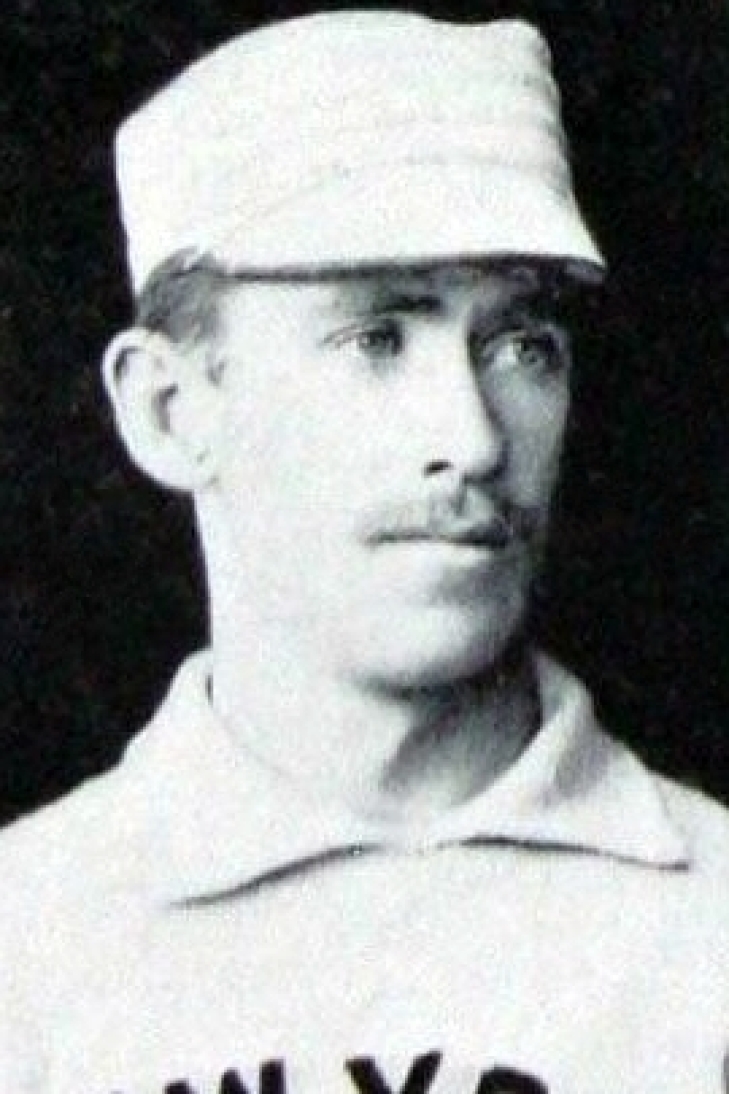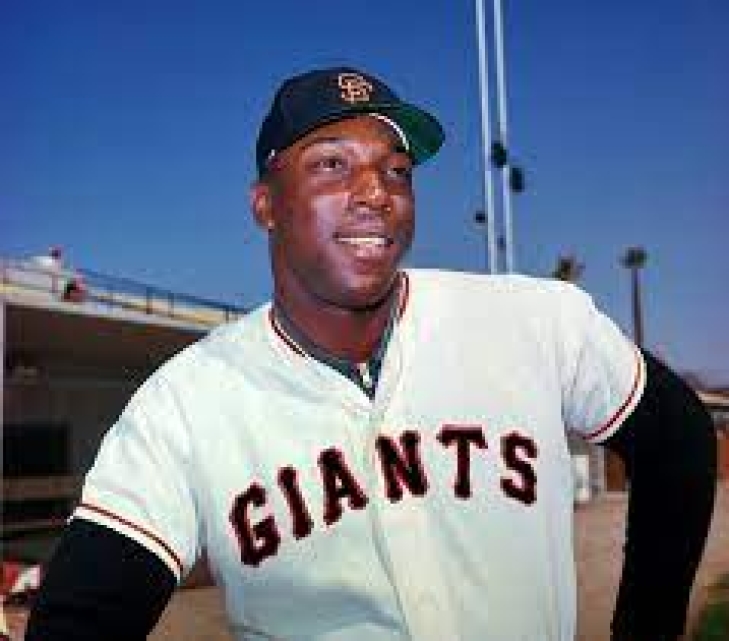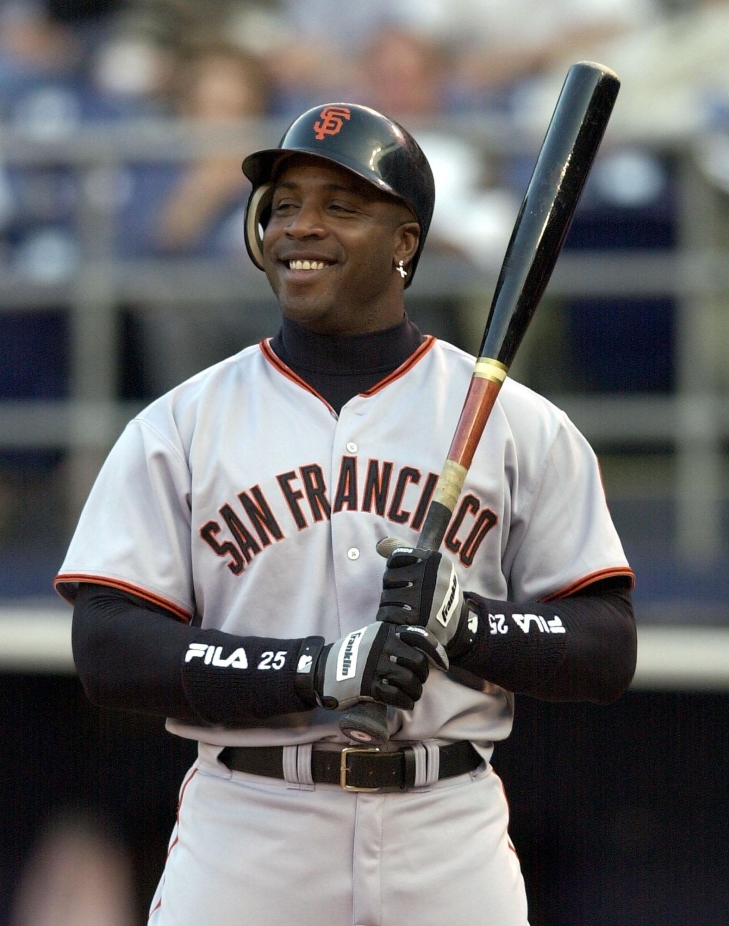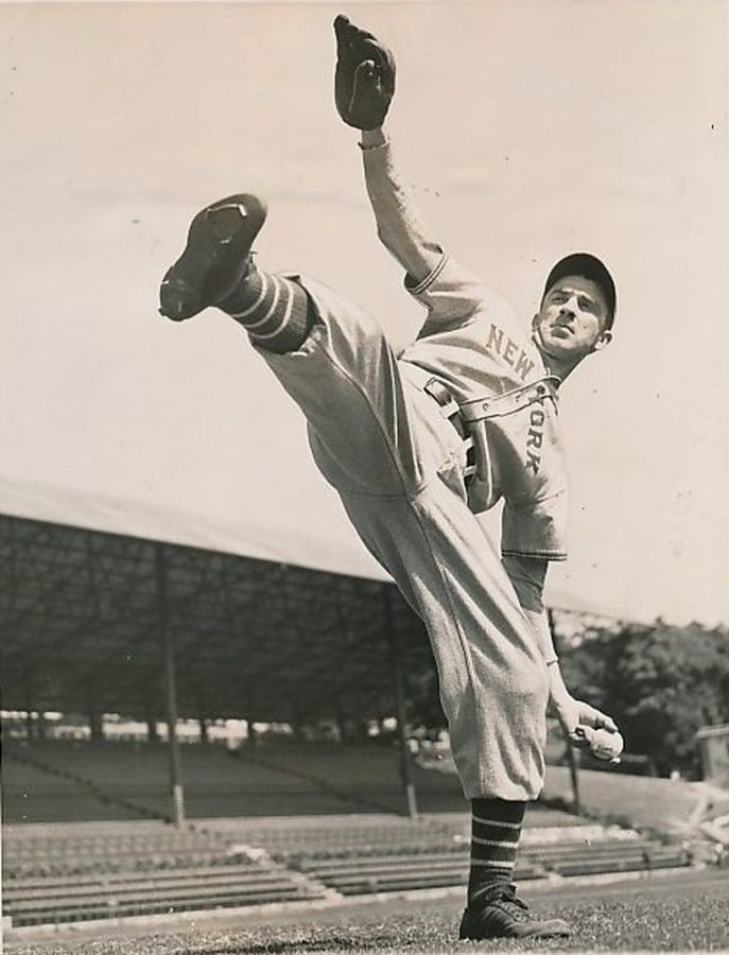18. Will Clark
Will Clark was the main star for the San Francisco Giants in the late 80s, but despite that, we can argue that his run in the Bay Area is slightly underrated.
After a phenomenal amateur career where he won the Golden Spikes Award for Mississippi Star and competed for the United States in the 1984 Olympics, Clark was the second overall pick in the 1985 Draft. A year later, Clark was called up by the Giants and was their regular First Baseman for the next six years; a period where he was one of the best in the game.
Clark was a special player. A two-time Silver Slugger and one-time Gold Glove recipient, Clark was the runner-up for the MVP in 1989, the same year he led the Giants to the Pennant while winning the NLCS MVP. When he broke out in his sophomore year (1987), he finished fifth in MVP voting and did so again the following year, where he began a five-year streak of All-Star Games. From 1987 to 1992, Clark batted over .300 with 151 Home Runs while also playing strong defense.
After the 1993 Season, Clark left San Francisco for Texas as a Free Agent, and while he is not a Hall of Fame player, he is one of the finest First Baseman in franchise history.
The Giants chose Clark for their Wall of Fame inaugural Class in 2008, and in 2022, his #22 was retired by the team.
34. Tim Lincecum
You don’t acquire the nickname of “The Freak” as an athlete when you are undersized. Well, that is unless you are Tim Lincecum.
The Golden Spikes winner from the University of Washington stood at 5" 11" and 170 pounds, and with a choir boy face, he did not look like a power pitcher, but he was not only as a Husky but for the Giants, who used a First Round Pick (10thOverall) to take him in 2006.
Lincecum only needed one year to make it to the main roster, and in his sophomore year, he was named the Cy Young winner after posting an 18-5 record, a 2.62 ERA while leading the NL in Strikeouts (265), ERA+ (168), FIP (2.62), H/9 (7.2) and SO/9 (10.5). It was the best season of his career but not his last great one.
The right-hander joined the elite group by becoming a back-to-back Cy Young winner. Lincecum’s 2009 saw the Pitcher go 15-7 with a 2.48 ERA (his best) while again finishing first in Strikeouts (261) while again topping the NL in FIP (2.34). These were Lincecum’s best years, but not his peak period still had some juice.
Lincecum went to his third consecutive All-Star Game in 2010 while also going number one in Ks for the third straight time. Tenth in Cy Young voting, Lincecum, aced the Giants to their first World Series Title in years, and his star shone the brightest.
Lincecum went to his last All-Star Game in 2011, but following that year, he struggled and was no longer the same dominator he once was. Every year, Lincecum’s stats eroded, but he was still helpful in their 2012 World Series win. The Giants again won the World Series in 2014, though Lincecum’s participation was minimal. He left the Giants for one final year in the Majors with the Angels in 2016, and though his career fizzled, you can’t discount that this is the only two-time Cy Young winner in franchise history. Lincecum’s overall pitching stats are lower than other moundsmen in franchise history, but his brief period of dominance dwarfs many above him on this list.
17. Madison Bumgarner
Madison Bumgarner was the tenth pick of the 2007 Amateur Draft, and two years later, he made his debut for the Giants.
Bumgarner would entrench himself in the Giants rotation the year after in June and became a big part of San Francisco's World Series win that year. Year by year, Bumgarner took over as the ace of San Francisco's staff and played a more prominent role in the Giants' 2012 World Series win.
From 2013 to 2016, Bumgarner was named to the All-Star Game, finished every year with an ERA under three, and had at least 199 Strikeouts. Bumgarner was in the top ten in Cy Young voting in all of those seasons, and his hitting gained him two Silver Sluggers.
What will forever keep Bumgarner in the Giants zeitgeist was his spectacular performance in the 2014 playoffs, where he won the NLCS MVP and World Series MVP, the latter seeing him allow only one over 21 Innings. It is arguably the best performance by any Giants hurler in the post-season.
Bumgarner left San Francisco as a Free Agent for the Diamondbacks, leaving the Bay Area with a record of 119-92 with 1,794 Strikeouts.
21. Tim Keefe
Tim Keefe played 14 years in Major League Baseball, the meat of which was with the New York Giants.
The righthanded Pitcher joined New York in 1885 after four years on a major level and made an immediate impact winning the ERA Title (1.58) while also topping the NL in H/9 (6.8). He won 32 Games in 1885 but raised that 42 in 1886, again giving him a first-place finish in a major statistical category.
1887 was not as smooth for Keefe, who missed a lot of Games when he suffered a nervous breakdown when he struck a batter in the head with a pitch. Keefe still went 35 and 19 with a league-leading WHIP (1.114) and H/9 (8.1). Following that stress, Keefe rebounded with his best year in Baseball. Leading the Giants to a World Series title, he was the best Pitcher in the game, finishing first in Wins (35), ERA (1.74), FIP (1.90), WHIP (0.937), H/9 (6.6), SO/9 (5.6 and SO/BB (1.49). We will argue it is one of the finest seasons in Giants history, and don’t we wish we had footage of it?
Keefe helped New York win another World Series in 1889, though he was less effective (28-13, 3.36 ERA). Like many baseball players, he felt underpaid, and he helped found the Player's League and pitched for the New York franchise. The upstart league was a failed experiment, and he rejoined the Giants of the NL, but he felt unwanted and played poorly, leading to a summer release.
Keefe had a record of 174-82 with a 2.54 ERA with the Giants.
Keefe entered the Baseball Hall of Fame in 1964 as a Veteran’s Committee Selection.
13. Larry Doyle
One of the New York Giants best players for years, “Laughing” Larry Doyle, came in with high expectations when his contract was purchased from Springfield of the Central League for a then-record $4,500. The money was well spent.
After a slow start, Doyle led the NL in Hits (172) in his third season (1909) in the Majors. Establishing himself as one of the top-hitting infielders in Baseball, Doyle led the NL in Triples in 1911 (25) and won the MVP in 1912, off of a 330 Season. Doyle's best year was in 1915 when he topped the NL in Hits (189), Doubles (40), and Batting Average (.320).
Doyle struggled after that and was surprisingly traded to the Cubs during the 1916 Season. He returned to close his career in 1918, playing a reduced role for three seasons before retiring.
The man who once famously said, "It is great to be young and a Giant," compiled 1,751 Hits while batting .292 for New York.
15. Mike Tiernan
"Silent" Mike Tiernan played his entire baseball career at the highest level with the New York Giants (1887-99), where the Rightfielder (pardon the pun) quietly was one of the better hitters of the 1890s.
Tiernan had 10 Home Runs as a rookie (which was great for this era), and he would help the Giants win the 1888 and 1889 versions of the World Series. Tiernan batted .335 in 1189, and he had six more .300 seasons. His best seasons were in 1890 and 1891, where his 13 and 16 Home Runs would respectively lead the National League, and he had five .490 plus Slugging years, including a league-leading .495 in 1890.
He retired with 106 Home Runs, which, again, we have to state was a very good number for a player who never had a Major League At Bat after 1899! Tiernan also had 1,838 career Hits and a lifetime Batting Average of .311. Despite those accomplishments, Tiernan was never on a Hall of Fame ballot.
10. Roger Connor
Roger Connor played three years with the Troy Trojans, establishing himself as a star on the rise before he signed with the New York Gothams in 1883. As the team changed its name to the Giants, Connor elevated himself as one of the best players in the game.
Connor batted over .300 in his first four years in New York and would have likely been named the league MVP in 1885. That year, Connor led the NL in Hits (169), Batting Average (.371), and OBP (.435). As the decade was coming to its end, the Giants were becoming one of the top teams in the NL.
Many people forget that there was a variation of the World Series in the 1880s, and Conner took the Giants to two of them, winning both (1888 & 1889). He jumped to New York of the Players League in 1890, but when the league folded, he was returned to the Giants. He left again for the first version of the Philadelphia Athletics in 1892 before he was traded back in 1893. The Giants dealt him to the Browns during the 1894 Season, which would be it for Connor as a Giant, who had 1,388 Hits with a .319 Batting Average.
Connor was inducted into the Baseball Hall of Fame in 1976 via the Veteran’s Committee.
8. Willie McCovey
The Giants already had a popular power hitter in Willie Mays, but no rule in baseball says you can't have two.
Willie McCovey joined the Giants organization as an Amateur Free Agent in 1955, and four years later, he was their Rookie of the Year. With all due respect to McCovey, the Giants didn't know what they had early in his Major League career. McCovey was a unique Rookie of the Year winner, as he did not even get called up until July 30, and he won the award against slim pickings with only 219 Plate Appearances, but he had an OPS of 1.085 that year. Pitcher figured out McCovey in 1960, and his Batting Average dropped below .240, and he was sent to the Minors.
Over the first few years of the 1960s, McCovey showed power but not consistency, and it looked like he was meant to be an average MLB player, but he broke out in 1963, winning the Home Run Title (44), and going to his first All-Star Game. After a drop-off in 1064 (18 HR, .220 BA), McCovey roared back, with six consecutive 30-plus Home Run Seasons, leading the NL in 1968 (36) and 1969 (45). In both seasons, McCovey topped the Senior Circuit in RBIs, Slugging Percentage, and OPS, and he won the coveted MVP in 1969. He would have his third straight Slugging and OPS Titles in 1970.
McCovey remained a potent slugger into the 1970s, but the struggling Giants traded him to San Diego after the 1973 Season, but returned as a Free Agent as a popular veteran in 1977, concluding his career with San Francisco for four seasons before retiring in 1980.
The slugger blasted 521 Home Runs, 469 with the Giants, while also collecting 1,974 Hits and 1,388 RBI for the team. The Baseball Hall of Fame inducted McCovey in his first year on the ballot in 1986. The Giants also retired his number 44 in 1980, and he was chosen for the inaugural class of the Giants Wall of Fame in 2008.
2. Barry Bonds
Barry Bonds is one of the most controversial players in Baseball history, and he was already a two-time defending MVP when he signed with the Giants as a Free Agent. What he accomplished with his bat in the Bay Area may never be seen again.
In his first year in San Francisco, Bonds won his first Home Run Title (46), RBI (Title (123), and was also the league leader in OBP (.458), Slugging (.677), and OPS (1.136). He won his third MVP while also winning the Silver Slugger and Gold Glove. Bonds was as good as he always was and remained an upper-echelon power hitter throughout the 90s. As proven a commodity as he was, the game was changing around him, and other sluggers were (allegedly) increasing their hitting numbers through the use of PEDs.
At age 35, Bonds set a new personal record for Home Runs (49), and his body appeared to be changing. There would be no doubt that something was different when in 2001, he shattered Mark McGwire's single-season Home Run record with 73. Bonds won the MVP again that year, and regardless of how fans and writers viewed him, there was zero doubt that he was the most feared hitter in Baseball.
From 2001 to 2004, Bonds won every MVP, every OBP Title, Slugging Title, and OPS Title. He was so good that he was intentionally walked with the bases loaded. No player has ever, and likely will ever, have a four-year run of hitting success like that.
Following 2004, Bonds became oft-injured, but when he was at the plate, he remained unstoppable. Following his contract's expiry, the Giants nor any other club offered him an opportunity. He would retire, belting 586 Home Runs, 1,440 RBI, and recording a Slash Line of .312/.477/.666 for San Francisco.
Controversy or not, there will never be another hitter like Barry Bonds again.
The Baseball Hall of Fame may never call his name, but the Giants inducted him into their Wall of Fame in 2017.
12. Buster Posey
A San Francisco Giant for all his 12 seasons in the Majors, Bister Posey is regarded by many as the best Catcher of the 2010s.
Posey was a superstar at the University of Florida, winning the 2008 Dick Howser Trophy and the Golden Spikes Award. The Giants took him fifth overall in the Amateur Draft that year, and after a brief seven-game run with San Francisco, he took over as the Giants everyday Catcher and won the National League Rookie of the Year. Posey capped that magical year by leading San Francisco to a World Series Championship.
An All-Star for the first of seven times, the Gants again won the World Series, with Posey deserving much of the credit. A fractured fibula took him out early in 2011, but he was healthy the year after, not only winning the Comeback Player of the Year but posting the best numbers of his career, winning the Batting Title (.336), Silver Slugger, while also having career-highs in Home Runs (24) and RBIs (104). Posey was named the MVP that year.
Posey continued to be one of the best behind the plate in the NL. Catapulting San Francisco to another World Series win in 2014, Posey continued to be a threat to bat over .300, go deep, handle his Pitchers, and provide an above-average defense. Posey won two Wilson Defensive Awards, one Gold Glove, and five Silver Sluggers.
Opting out of the 2020 Season due to COVID-19, Posey came back to win his second Comeback Player of the Year, and with Baseball now doling out All-MLB awards, he earned All-MLB 2 honors. This abrupt conclusion allowed Posey to retire on top, as he surprised many by calling it quits after the 2021 Season.
Posey left the game with an even 1,500 Hits, a .302 Batting Average, and 158 Home Runs.
11. Mickey Welch
Playing his first three years of high-level baseball with the Troy Trojans, Mickey Welch joined the New York Giants as the Trojans imploded after the 1882 Season.
The Pitcher may have had an under-the-radar career in his day, even in perspective, but it was still brilliant and worthy of high accolades. From 1883 to 1889, Welch was New York’s ace, winning a plethora of games and fanning a litany of batters. Welch was erratic, leading the NL in Walks three times, but his overall mound skill kept him as an elite player.
Welch helped lead New York to win the version of the 1888 and 1889 World Series as their staff ace. Shortly afterward, Welch suffered arm fatigue, and though he was a competent batter, his time passed, but his 238-146 Record was exemplary.
Welch entered the Baseball Hall of Fame in 1973 when the Veteran's Committee chose him.
9. Bill Terry
Bill Terry played his entire career with the New York Giants and was the last National League player to bat over .400, a feat he accomplished in 1930. That being said, Terry was far more than that.
Debuting for New York in 1923, Terry was the Giants’ starting First Baseman for years, with his breakout coming in 1925. Collecting over 200 Hits in six different seasons, Terry batted .341 over his career while also amassing 154 Home Runs and 1,078 RBIs. Terry never won an MVP (though he finished in the top ten six times), but he did lead the Giants to a World Series Title in 1933.
Terry entered the Baseball Hall of Fame in 1954, and many years later, in 1980, he saw his number 3 retired by the team.
7. Amos Rusie
Amos Rusie debuted at the Major League level with the Indianapolis Hoosiers in 1889, and you could say he was the original "Wild Thing." Rusie was prone to wildness, and although there were no radar guns back then, it was generally believed that he was among one of the fastest throwing Pitchers in the sport.
The Hoosiers folded after Rusie’s rookie year, and most of the team, including Rusie, was given to the New York Giants to bolster the flagship of the National League. Rusie walked many batters, giving more free passes each year from 1890 to 1894, but he countered that by fanning more batters than anyone else in the same period. Rusie led the NL in Strikeouts five times, and he did not allow many hits either, as he was also a four-time leader in H/9.
Rusie’s wildness was one reason baseball moved the mound ten feet back to 60, the current length. It didn't stop Rusie from beaning Hughie Jennings in 1897 in the head so hard that the latter was comatose for days, but you were never not entertained by a Rusie start.
Rusie made Giants history, becoming the first player for their team to throw a no-hitter (1891) and the first to win the Pitcher's Triple Crown in 1894 (36 W, 2.78 ERA, 208 SO). After his 1894 juggernaut of a year, Rusie had an average campaign but was still the team's top star. Rusie thumbed his nose at Andrew Freedman, the Giants owner, which was that century's version of extending the middle finger. Freedman fined him $200, a number that was nearly a tenth of his salary, and he sat out the entire 1896 Season in protest. Fearing a lawsuit, the other owners intervened, paying off Rusie, and the flamethrower returned to win his second ERA Title.
Rusie’s arm trouble and off-field problems kept him out of the 1899 and 1900 Seasons, but the Giants were able to trade him to Cincinnati straight up for a young Christy Mathewson, which would be the first great heist of the century. Rusie played in only three Games for the Reds before retiring, while Mathewson became one of the greatest hurlers ever. Despite that lopsided transaction, Rusie was outstanding in his day, winning 234 Games against 163 Losses with 1,835 Strikeouts and a 2.89 ERA.
Rusie was also a competent batter and fielder, batting .253 with 410 Hits with the Giants, which doesn’t hurt this rank.
He entered the Baseball Hall of Fame in 1977 via the Veterans Committee.
5. Carl Hubbell
The Detroit Tigers made a colossal error when they released Carl Hubbell, a prospect they signed when they worried he was dependent on the screwball. Hubbell did use it a lot, but he did it so well that it landed him a spot in Cooperstown.
Hubbell’s contract was sold by Beaumont (Texas) to the New York Giants during the 1928 Season, and he wasted no time proving his worth. Hubbell quickly ascended to an upper-tier hurler for the Giants and would begin a four-year streak of WHIP Titles in 1931 and a four-year run atop the leaderboard in SO/BB in 1932. He was climbing to the top, and he would take that mantle in 1933.
Hubbell led the NL in Wins (23) and ERA (1.66), with the latter being a career-best. This was also the case for his only FIP win (2.63), and of the seven WHIP Titles he had, this was the only one where he was below one. Hubbell won the MVP that year and led the Giants to a World Series Championship. As great as that was, Hubbell was best known for his performance in the 1934 All-Star Game, where "King Carl" fanned Babe Ruth, Lou Gehrig, Jimmie Foxx, Al Simmons, and Joe Cronin in order.
Hubbell remained a dominant hurler in the mid-30s, winning a second ERA Title in 1934 (2.30) and a third in 1936 (2.31). He won his second MVP that year but also began a streak that bled into the year after, where he won a record 24 straight decisions. The Giants went to the 1936 and 1937 World Series but, despite Hubbell's skill, were overmatched both times by the cross-town New York Yankees.
Hubbell lost his effectiveness waned after '37, but he was still a better-than-average Pitcher over the next four years. After his play fell off in 1943, Hubbell was released, but the screwball master became an influential figure to many who followed. Hubbell finished his career with a record of 253-154, 1,677 Strikeouts, and an ERA of 2.98.
Hubbell was inducted into the Baseball Hall of Fame in 1947. San Francisco also retired his number 44, having done so in 1941.
3. Mel Ott
Mel Ott was highly sought after as a teen, but his slight 5’ 9” frame made scouts pause. The Giants signed him in 1926, and he would play for them that year, and was a starter in the Outfield two years later, making every team that passed on him curse their hesitation.
Ott did not look like a power hitter, but he was. Smacking 42 Home Runs in 1929, Ott never had another 40-plus year, but he had seven more 30-plus ones, six of which were good enough to lead the National League. No other player in the National League smacked more taters than Ott did in the 1930s.
Throughout that decade, the Giants were also very good. Winning the pennant three times, Ott led New York to a title in the first one, 1933. Ott was not just a power hitter; he batted over .300 ten times and knew how to work the count to get on base. Ott led the NL in free passes six times and On Base Percentage four times.
When the Majors began the All-Star Game in 1933, Ott participated in the second one, beginning 11 straight. A two-time OPS leader, Ott was a fixture of greatness for years, but that was aided in that late in his career; he was not one of the players in the American Military during World War II. Ott was also named a Player/Manager in 1941, though his skills were declining.
After barely playing in 1946 and 1947, Ott was released after the season. Over his career, Ott blasted 511 Home Runs and had 1,860 RBI, 2,876 hits, and a 3/4/5 career Slash Line.
In 1951, Ott entered Cooperstown in his third year on the ballot, three years after the Giants retired his #4.
4. Christy Mathewson
There are few players to could lay a stake as the best player at their position in multiple years. Christy Mathewson is one such player and could say so for at least a decade.
The Giants first acquired Mathewson in 1901 from Norfolk in the Virginia-North Carolina League, but his stay was brief, and he was returned to the Minors. The Cincinnati Reds swooped in for Matthewson in that off-season, and the Giants rethought their stance on the Pitcher and traded back for him. It remains one of the best second guesses in sports history.
Mathewson immediately proved the Giants brass correct with a good pair of seasons followed by a breakout where he went 30-13 and led the NL in Strikeouts with 267. The Giants won the Pennant the following year but would not play in the World Series due to acrimony between both teams (Boston) management, and Mathewson, who had 33 Wins, and was again the Strikeout Champion (212), was deprived of a chance for a Title. That would not happen in 1905.
Mathewson won the Pitcher's Triple Crown (31 Wins, 1.28 ERA & 206 SO), and the Giants would not be denied, with Mathewson leading them to their first World Series. Winning the Triple Crown again in 1908 (37 Wins, 1.43 ERA. 259 SO), Mathewson won another ERA Title in 1909 with a sparkling 1.14. For the remainder of the decade, Mathewson remained the elite hurler in the NL.
As his power dissipated in the 1910s, his accuracy increased, keeping him as a dominant mound maestro. Mathewson won two more ERA Titles (1911 & 1913), and he had a five-year run (1911-15) leading the NL in BB/9, giving him seven in total. The team around him improved, and Mathewson brought the Giants to three straight World Series (1910-12), but although he pitched well, the team floundered and gave little run support, and New York lost all three.
Mathewson's skills eroded in 1915, and he quickly became a shell of his former self. He was traded to the Reds during the 1916 Season, where he became a Player/Manager, but he only appeared in one Game as a player. He is the all-time franchise leader in bWAR for Pitchers (100.6), ERA (2.12), Wins (372), Innings Pitched (4,779.2), and Strikeouts (2,504). Mathewson was elected into the Baseball Hall of Fame in 1936 as part of the first Hall of Fame Class. The Giants honored Mathewson with his name and a "NY," along with the other retired numbers.
6. Juan Marichal
As baseball spread across the Dominican Republic, it was only a matter of time before a star Pitcher would come from that Caribbean island. That star was Juan Marichal.
Signed in 1957, Marichal brought his signature high kick delivery stateside and debuted for San Francisco three years later, entering the starting rotation, which is where he stayed for over a decade. Marichal had a breakout year in 1962, going to his first of eight straight All-Star Games and cementing his spot as the staff ace throughout the rest of the 1960s.
Marichal strung together four straight 20-Win years (1963-66) and another two in 1968 and 1969. He led the National League in that statistic in 1963 and 1968, and though he only won one ERA Title (1969), he kept his ERA under 2.80 every season from 1963 to 1969. His control was also displayed throughout his career, as he was a three-time leader in SO/BB, a four-time leader in BB/9, and twice topped the NL in WHIP.
Moments also mark greatness, and Marichal had his share. He threw a no-hitter in June of 1963, and a month later, he out-dueled Warren Spahn of Milwaukee in a sixteen-inning classic where he shut out the Braves. Marichal didn't win a World Series, but he did help them reach the playoffs twice (1962 & 1971). After his skills eroded, his contract was sold to the Red Sox, but he retired soon after.
With the Giants, Marichal won 238 Games against 140 Losses with a 2.84 ERA and 2,281 Strikeouts.
Marichal was chosen for the Baseball Hall of Fame in 1983 on his third year on the ballot. His number 27 was retired by the team in 1975, and in 2008, Marichal was inducted as part of the first San Francisco Giants Wall of Fame Class.
1. Willie Mays
Willie Mays played two years with Birmingham of the Negro Leagues before he signed with the New York Giants, and it would not take long before the “Say Hey Kid” became the face of the franchise.
Mays could do it all. When they speak of five-tool baseball players, Mays is the literal definition. He had it all. Mays had the power, the speed, the glove, the arm, and the average. There was nothing that he could not do, and that wasn't the case just for a year or two; Mays had those skills for most of his career. Mays could very well be the most complete baseball player that ever lived.
Debuting for the Giants in 1951, Mays won the Rookie of the Year and was the spark plug for the team that shocked the world by coming from 13.5 Games behind in August to win the Pennant. New York didn’t win the World Series, but they had a star on the rise, but military service kept him out of 1953 and most of 1952. When he returned, he staked a claim as baseball’s top dog.
Mays won the Batting Title, 1954 MVP, and led New York to a World Series Championship. Although 1954 was his only World Series win, his individual greatness was cemented in every facet of the sport. He went to his first All-Star Game and would be invited every year until 1971.
Mays had the perfect eye at the plate. He batted over .300 nine times and drew Walks, netting an OBP over .400 five times and winning two OBP Titles. The Power game with Mays was also one of the best ever. Mays won four Home Run Titles, blasting 646 of 600 career Home Runs with the Giants. Mays never won an RBI Title but had at least 100 in a season ten times with 1,909 overall as a Giant. An MVP again in 1965, Mays had six more top-five MVP finishes.
Speed was another one of Mays's calling cards. He led the NL in Stolen Bases four years in a row (1956-59) with 336 as a Giant. Mays was also one of the game's top defensive players, having not only made the 1954 over-the-head catch in Game 1 of the World Series but continuing to dominate on the field. He led the NL in Defensive bWAR in 1954 and was in the top ten seven other times. He also was a three-time leader in Total Zone Runs.
Mays was traded to the New York Mets during the 1972 Season, where he unceremoniously ended his career, though he did help them win the 1973 Pennant. He is still the all-time Giants leader in bWAR (154.5), Offensive bWAR (134.8), Runs Scored (2,011), Hits (3,187), and Home Runs (646).
Mays was inducted into the Baseball Hall of Fame in 1979, his first year on the ballot. San Francisco retired his number 24 in 1972 while he was still an active player, and he was later an inaugural member of the Giants Wall of Fame in 2008.
Buster Posey to retire tomorrow.
This was a little surprising.
One of the top Catchers of the last decade, Buster Posey, is expected to announce his retirement tomorrow.
A former fifth overall pick, Posey debited in 2009 and was the National League Rookie of the Year in 2010 and helped lead the Giants to a World Series win. Two years later, he won the MVP, and again took San Francisco to a World Series title. A seven-time All-Star and four-time Silver Slugger, Posey won a third World Series ring in 2014.
After opting out of 2020, he had a comeback year in 2021, leading fans to feel that there was plenty left in Posey’s tank, making this retirement an unexpected one.
Posey will be eligible for the Baseball Hall of Fame in 2027, and with a career bWAR of 44.9, he is lower than the average HOF Catcher, but he does have the MVP and multiple World Series Rings. He is also retiring on his own terms, and probably could have compiled the advanced metrics, as well as traditional stats that would make him a likely Hall of Famer, but as of now, he feels like an on-the-fence candidate. He also retires with a lifetime Batting Average of .302 with 1,500 Hits and 158 Home Runs.
We here at Notinhalloffame.com would like to wish Buster Posey the best in his post-playing career.
165. Matt Williams
Matt Williams was a cornerstone of the San Francisco Giants for a decade (1987-96), where he played in the infield, switching between Third Base and Shortstop.


